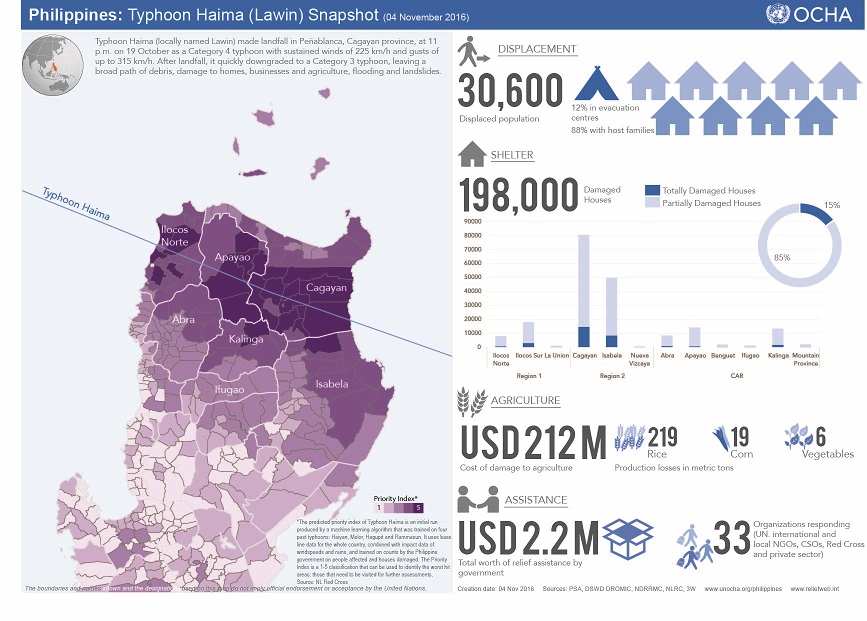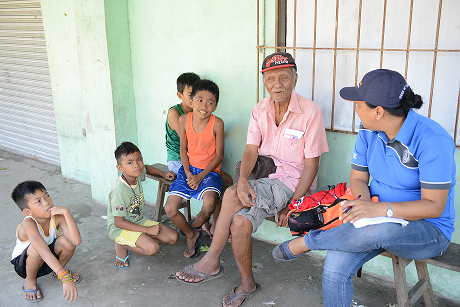
Typhoon Haima update and unmet needs
Typhoon Haima (locally named Lawin), a Category 4 typhoon, struck the Philippines on 19 October. It destroyed homes, businesses and agriculture, and caused flooding and landslides. At its height, the typhoon displaced over 200,000 people in Regions I, II, III and the Cordillera Administrative Region and left at least 15 dead and 4 people injured. Farmers and fisher folk were especially affected by the typhoon, with millions of dollars in production losses to rice, corn and highvalue crops and fisheries. Typhoon Haima was the twelfth typhoon to pass through the Philippine Area of Responsibility in the 2016 typhoon season and immediately on the heels of Typhoon Sarika (locally named Karen), which also affected parts of central and northern Luzon and caused similar damage to agriculture.
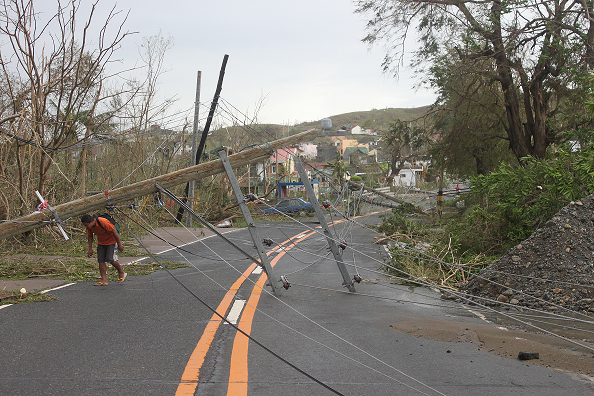
Credit: OCHA/J. Addawe
Peñablanca, Cagayan (20 October 2016) - The day after Typhoon Haima made landfall, utility poles were toppled. Power continues to be intermittent in the region.
Pre-disaster preparedness
In the days leading up to its landfall, the Humanitarian Country Team (HCT) continuously monitored the risk and developed scenarios concerning the typhoon’s expected paths and potential humanitarian impacts. The National Disaster Risk Reduction and Management Council (NDRRMC), meanwhile, conducted daily pre-disaster risk assessment meetings, activated its preparedness and response clusters, and conducted early evacuation of the population in the most at risk areas. For the HCT to be able to readily respond and support the Government, OCHA collaborated with humanitarian partners and mapped the presence of agencies in the likely affected areas and took stock of in-country relief items that can be readily mobilized. The HCT cluster lead agencies were also advised to reach out to the Government’s cluster counterparts to get a sense of their preparedness actions, plans for response and possible support requirements.
The working groups of the HCT such as Information Management (IM) Working Group, Community of Practice on Community Engagement, Cash Working Group and the Humanitarian Communications Group were also in gear with their respective preparedness measures by providing their networks with timely and life-saving information through social media, flash updates and IM products.
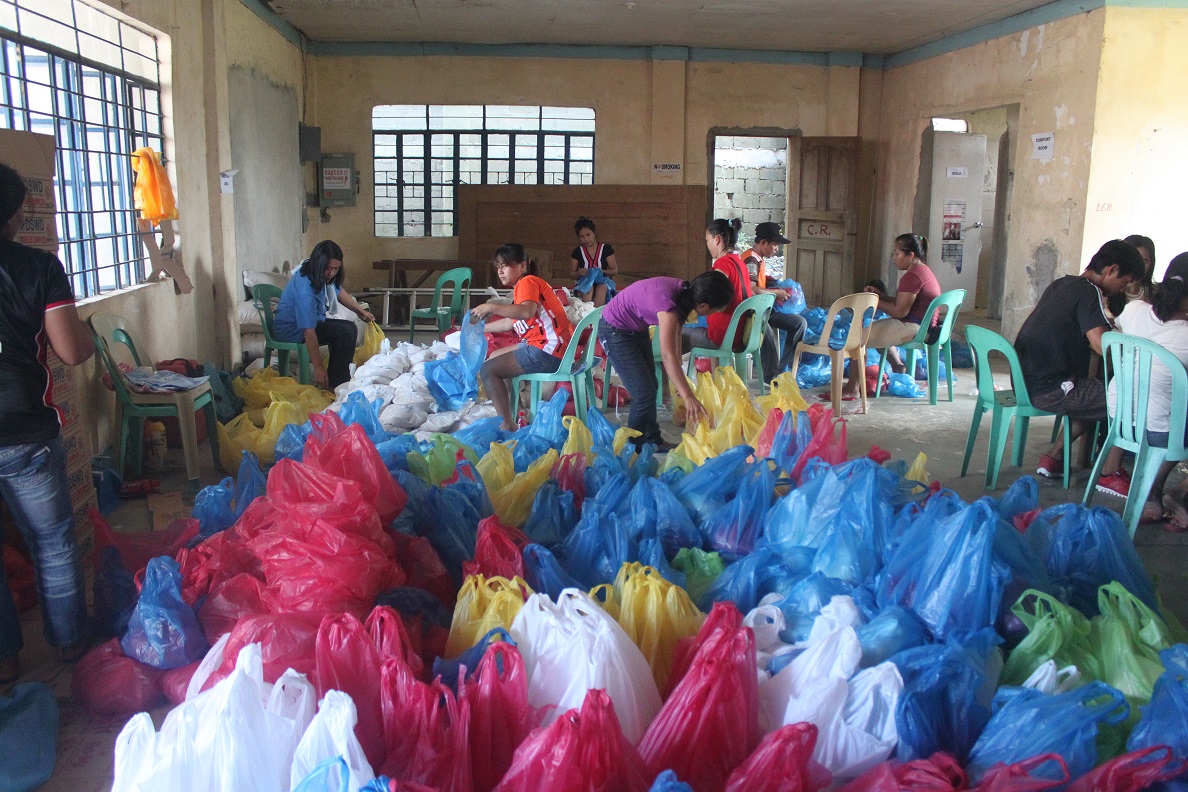
Pudtol, Apayao (22 October 2016) - Repacking of food relief to be distributed to the community at the Pudtol Municipal Hall.
Coordination with Government agencies
OCHA was invited to participate in the response planning meeting on 20 October, which was held at the Office of Civil Defense’s Region II office in Tuguegarao City, Cagayan province. At this time, the Humanitarian Coordinator wrote a letter to the Government offering assistance from the international humanitarian community. OCHA, World Food Programme (WFP) and International Organization for Migration (IOM) joined Rapid Damage and Needs Assessment (RDANA) teams from NDRRMC in assessing the impact of the typhoon in towns in Cagayan while a second OCHA team conducted assessments in the provinces of Apayao and Ilocos Norte.
More than 200,000 families (890,000 people) were displaced in Regions I, II, III, and the Cordillera Administrative Region (CAR). Most returned to their homes safely after the typhoon passed. Due to the preparedness measures undertaken by national and local authorities, only a dozen fatalities were confirmed, and there were no dire humanitarian needs and assistance can be managed by local authorities with regional and national government support. The Government formally declined the Humanitarian Coordinator’s offer of assistance and has stated that it can manage the effects of the typhoon.
However, the impact of the typhoon is most evident in the destroyed homes and extensive damages to agriculture. As responders are now able to access far-flung areas and assessment reports continue to arrive, a picture of the extent of the impact now becomes clearer. In its latest report, the Department of Social Welfare and Development (DSWD) recorded more than 168,000 damaged and 29,000 destroyed houses. Over 65 per cent of the damaged homes were concentrated in Cagayan and Isabela provinces. Also hard-hit was CAR, where 18 per cent of the overall damaged and destroyed homes were located.
DSWD announced that it will provide PhP5,000 (US$104) to affected families for emergency shelter assistance, and up to P25,000 ($520) toward rebuilding those homes that were destroyed. Shelter Cluster member agencies have so far provided sheltergrade tarpaulins, galvanized iron sheets, and shelter repair kits. Given the high number of damaged and destroyed houses being reported, the Shelter Cluster notes there is still a significant gap in emergency shelter items, particularly tarpaulins and shelter repair kits. As the government has not requested international assistance, humanitarian organizations are confronted with depleted in-country stockpiles and the inability to replenish stocks due to a reduced opportunity to collectively raise funds from donors.
The Department of Agriculture (DA), supported by the Food and Agriculture Organization (FAO), conducted assessments on the damages to the agriculture and fisheries sector using an Unmanned Aerial Vehicle. In its assessment report, damages have reached P10 billion ($208 million) with rice, corn and high-value crops suffering the greatest losses. The agricultural damages will have dire consequence on the livelihoods of many farmers and food security as the typhoon has ruined harvested, ready-to-harvest, and newlyplanted crops. Should DA seek the support of FAO, the agency might only be able to support the provision of seeds and fertilizers due to the constraint in mobilizing resources.
Humanitarian agencies have also received requests from certain national government departments and local governments to support the ongoing response. HCT is seeking guidance from NDRRMC on how to respond to such requests considering that there was no appeal for international assistance and the Government asserted in media interviews that all bilateral requests should be channelled to the NDRRMC to verify the needs and determine if national or regional councils can provide the assistance instead. Per previous practice, humanitarian agencies can directly respond to requests provided that the assistance is mobilized from within the country and the NDRRMC is kept informed.
Unmet needs and ways forward
The Shelter Cluster in its assessment in Cagayan province indicated that damages are concentrated in poor rural communities and also noted that in some municipalities 100 per cent of the houses have incurred at least partial damages. The day after the typhoon struck, some affected residents started rebuilding their damaged homes either by using salvaged materials or purchasing construction supplies from hardware stores which have resumed operations.
Over 65 per cent of the damaged homes were concentrated in Cagayan and Isabela provinces. Also hardhit was CAR, where 18 per cent of the overall damaged and destroyed homes were located.
The Shelter Cluster in its assessment in Cagayan province indicated that damages are concentrated in poor rural communities and also noted that in some municipalities 100 per cent of the houses have incurred at least partial damages.
Local humanitarian actors in the Mindanao island provinces
Tahir is a computer science student at Sulu State College. He is an active member of the community, belonging to the local youth organization I-YOU-DA SULU. He says that he joined because he wanted to educate himself and help out with peace-building initiatives going on in my region. He also volunteers his time as the secretary of the Maksuj Network, a local group composed of 13 NGOs who work in Sulu and Basilan. These NGOs monitor the continuing conflict in their region and track those who are displaced. They also collaborate on Government-supported projects. Being on the ground in the Mindanao island provinces comes with unique challenges. “When we’re in the field, it’s difficult to be distinguished as either a supporter of the Government or Abu Sayyaf. The fear of being kidnapped always exists,” says Tahir.
The work of local NGOs in the island provinces have been vital to international humanitarian organizations who have little or no access to the area. Travel to Sulu from Zamboanga City can only be done by a commercial barge, which takes eight hours to Jolo, the capital of Sulu. Commercial flights have been suspended for a year now.
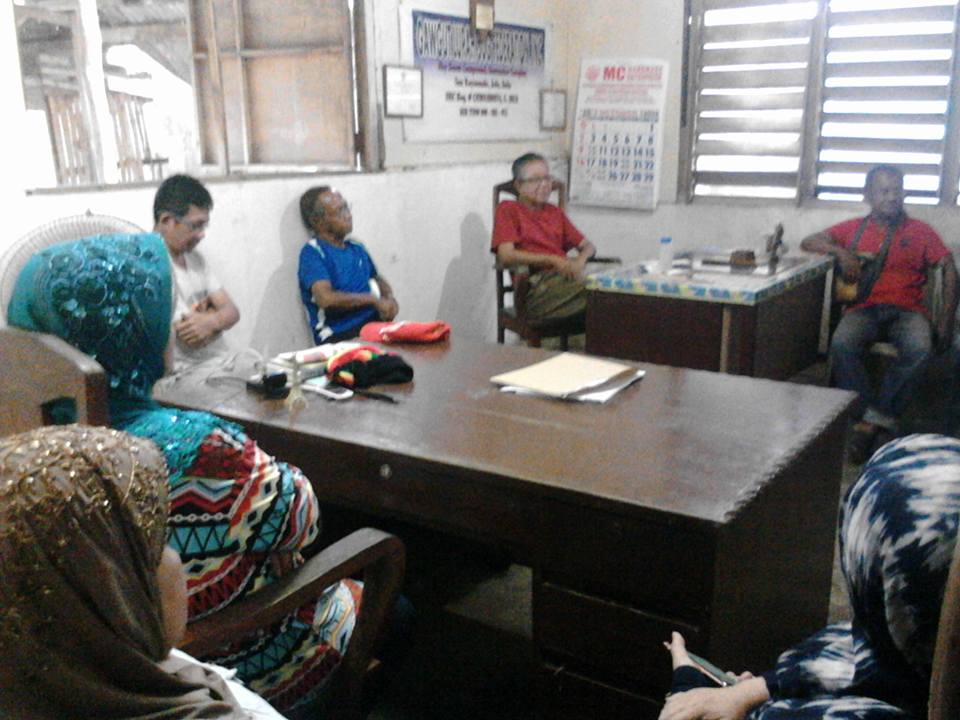
Jolo, Sulu (24 October 2016) - A recent meeting of Maksuj Network members.
Conflict and protracted displacement in Sulu and Basilan
The security conditions in Sulu and Basilan for local and international aid workers has hampered monitoring and response to the humanitarian needs of the people caught in the conflict between the non-state armed organization, Abu Sayyaf Group (ASG), with the Armed Forces of the Philippines. ASG is known to kidnap foreign nationals for ransom. Over the years, ASG has reportedly dispersed into smaller groups further limiting the access of aid workers to civilians. Nevertheless, the provincial and local governments have been able to provide some basic food and shelter assistance with the help of the Red Cross and local NGOs. The recipients are mostly those who fled to safety in nearby towns and cities.
The conflict in Sulu and Basilan has displaced nearly 32,000 people, as of 30 October according to the Office of Civil Defense. Most of the displaced return to their homes as soon as the fighting and military presence moves to other areas. Others continue to stay with relatives. The protracted displacement of the local population – weaving in and out of their villages –has been going on for many years, affecting the sustainability of their livelihoods. Disruption of schooling, poor access to basic social services and post-traumatic stress among children are common. Some families have started to move to Zamboanga for their safety and schooling of their children. As of September, an estimated 200 families have arrived in the city. OCHA has alerted city’s department of social welfare to register the new IDPs and provide assistance.
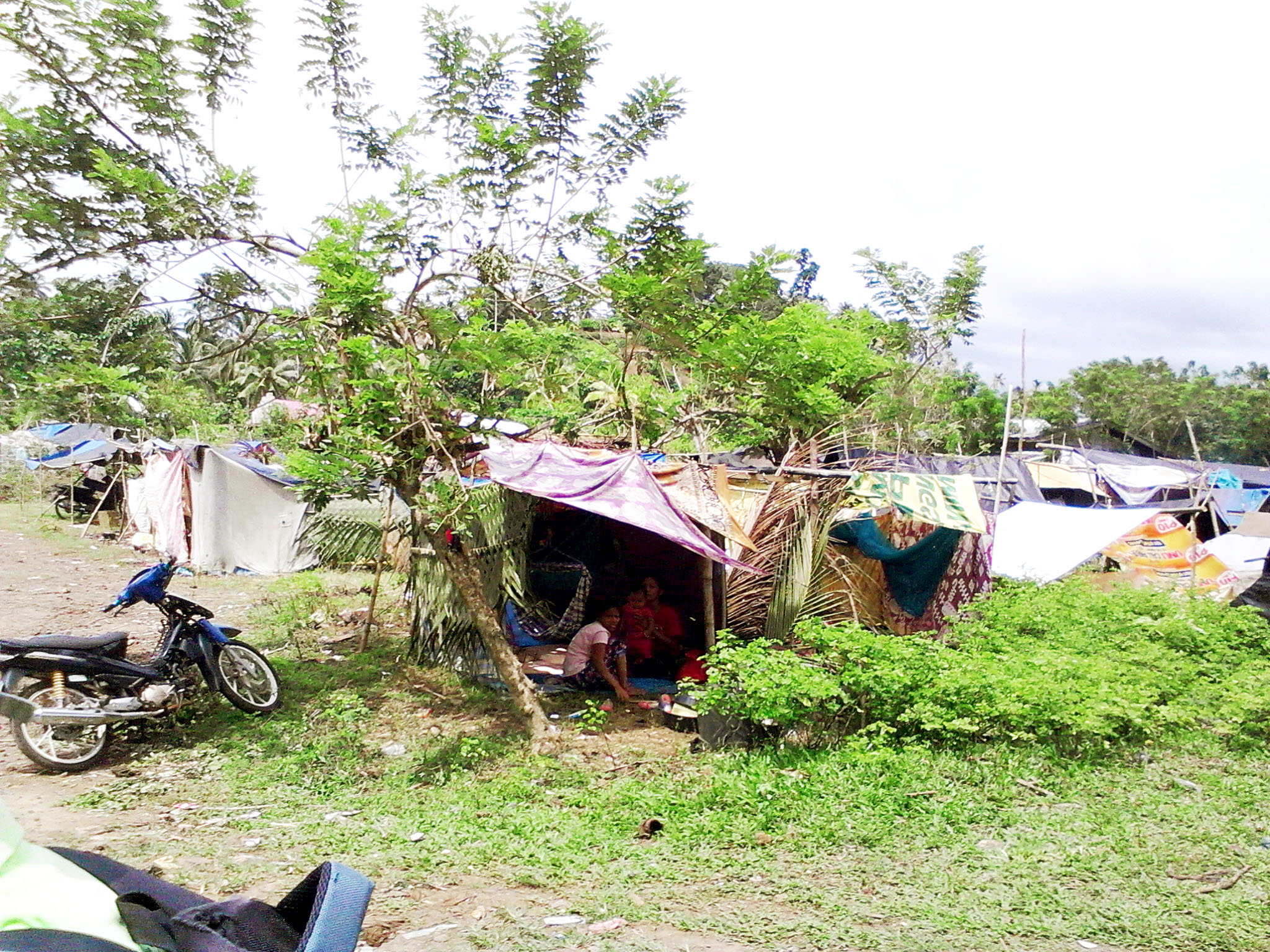
Patikul, Sulu (2016) - People displaced by conflict from barangays of Danag, Bungkaong and neighboring areas move to Latih in Patikul, Sulu, building makeshift tents.
Engaging the community and local stakeholders
While international agencies are largely dependent on their local partners on the ground for information in the hard-to-reach island provinces, the local NGOs face struggles to continue their operations. They depend on contributions from their members to operate. The constant cycle of conflict and displacement makes data-gathering and basic socioeconomic indicators hard to obtain.
Getting the local community involved is also one of their concerns. “It has been difficult to engage people, especially youth, in our work as there is high unemployment in both Sulu and Basilan. Every year, young students graduate from the four universities in Sulu –Mindanao State University-Sulu, Norte Dame of Jolo College, Sulu State College and Hadji Butu School of Arts and Trade. These graduates look for jobs in Malaysia, Indonesia, Brunei and the Middle East because they are not able to get employment elsewhere in the country. Those that are not able to obtain jobs are “lured into the lucrative kidnap-for-ransom groups,” says Tahir.
Coordination remains a challenge between all the stakeholders. The Sulu Area Coordination Center was established in 2001 by the Governor of Sulu. It is headed by local government officials and brings together government, military, police and civil society organizations. “It is an adhoc meeting, and it’s often difficult to express the people’s suffering and human rights issues in the presence of the government representatives,” says Tahir. Despite a mountain of challenges, Tahir remains optimistic. “I’ve never lost my hope that someday Sulu will be peaceful and progressive.”
While international agencies are largely dependent on their local partners on the ground for information in the hard-to-reach island provinces, the local NGOs face struggles to continue their operations.
IDP bill and recent developments in the Philippines
The Philippines pledged during the World Humanitarian Summit last May to pass the Internally Displaced Persons (IDP) bill. The bill seeks to protect the rights of those displaced by armed conflict, violence and natural disasters. Several versions of the bill have been under review in Philippine legislature since 2004, when then- Representative Etta Rosales filed House Bill 3334, the Internal Displacement Act. In 2013, a version was finally passed but was vetoed by the President.
On 30 June this year, Representative Harry Roque filed House Bill 222, An Act to Protect the Rights of Internally Displaced Persons. He acknowledges the long path the bill has taken over the years. “More often, the bill is not seen as urgent. In order for a bill to become law, you need to be very persistent and highlight the importance of the bill to get the attention of the House,” he says. After bills are filed, the Rules Committee of the House of Representatives decides which bills will be debated and passed into law. Roque reflects on the situation of IDPs in the Philippines, saying that, “When the IDP bill was first filed, there was not a lot of awareness on displaced persons. My intent is to expand the coverage. The bill is not just to recognize that IDPs are protected by human rights; we borrow the definition of protection for civilians in armed conflict. We see no reason why IDPs should have less protection. This basically expands their protection because they are first and foremost recognized as civilians, while reiterating the rights of civilians.”
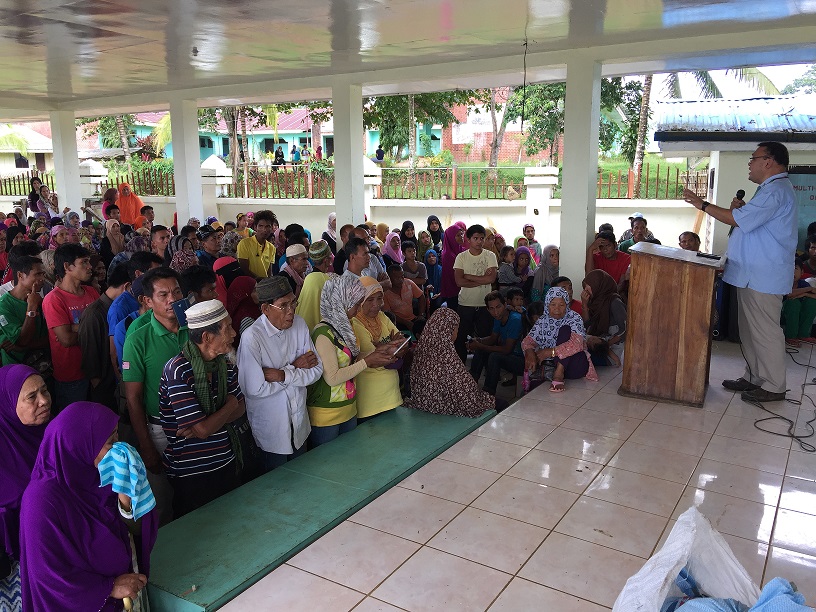
Tipo-Tipo, Basilan (August 2016) - Rep. Harry Roque discussing the rights of displaced persons under the IDP bill to the community who undergo repeated displacement.
Special Rapporteur on the human rights of IDPs
On 30 August, Ms. Cecelia Jimenez was appointed the new Special Rapporteur on the Human rights of Internally Displaced Persons. Ms. Jimenez was the National Director of the IDP Project for the Commission on Human Rights of the Philippines. Prior to this, she was the Senior Training and Legal Officer at the Internal Displacement Monitoring Centre / Norwegian Refugee Council based in Geneva. A Philippine lawyer with specialisation in human rights and migration, Jimenez has protection field experience primarily in Southeast Asia and has over two decades of experience in NGO human rights advocacy for the Asia- Pacific region. She also has teaching experience as an adjunct professor on human rights law and on international humanitarian law, and as trainer and legal consultant for a variety of academic and NGO consultancies on capacity-building, strategy formulation and partnerships. She joins three other appointees by the UN Human Rights Council coming from the Philippines: Ms. Victoria Tauli-Corpuz, Special Rapporteur on the rights of indigenous peoples; Ms. Virginia Dandan, Independent Expert on International Solidarity; and Mr. Ricardo Sunga III, Chair-Rapporteur of the Working Group of Experts on People of African Descent.
Jimenez succeeds Dr. Chaloka Beyani, who made an official visit to the Philippines on 21 July 2015. In his final report on his mission to the Philippines, he gave several recommendations, among them to translate international standards, including the 1998 Guiding Principles on Internal Displacement and the Framework on Durable Solutions for Internally Displaced Persons, into domestic law. “To delay further sends a wrong signal about the commitment of the Government and withholds essential legal protection from internally displaced persons. A law on internally displaced persons must give due attention to all forms of displacement, including conflict and development induced displacements.”
A former Special Representative of the Secretary-General on the human rights of internally displaced persons, Dr. Walter Kaelin, also concluded his visit to the Philippines in October, as part of his global study on protracted displacement, commissioned by OCHA.
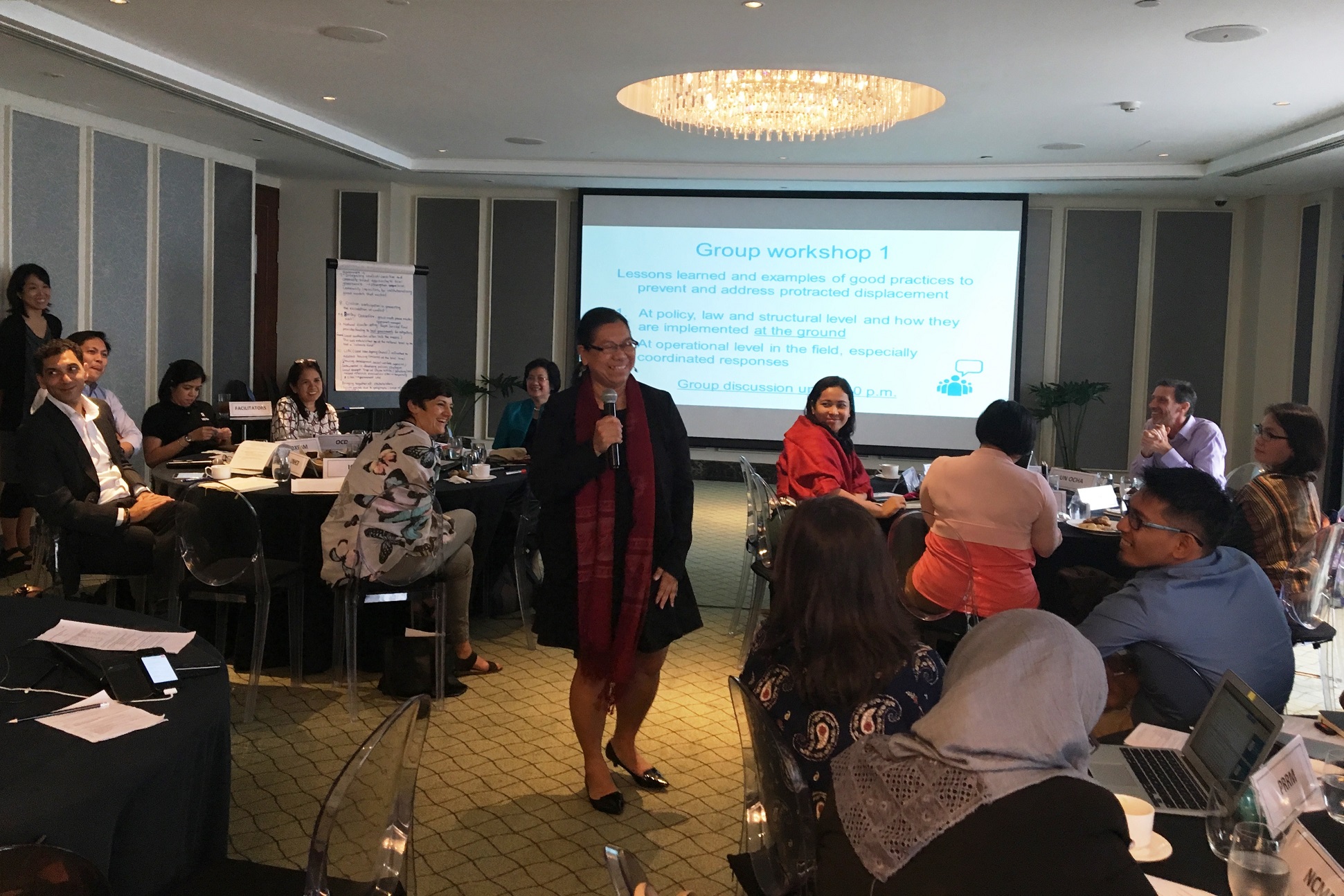
Makati, Metro Manila (6 October 2016) - Ms. Cecelia Jimenez (center) facilitating an OCHA roundtable on protracted displacement, led by Dr. Walter Kaelin.
The Protection Cluster co-lead, UNHCR, together with cluster members has been addressing prolonged and multiple displacement incidents in Mindanao since 2010. These displacement incidents which are mostly caused by armed conflict and clan feuds involved internally IDPs who fled their homes many times and for longer durations. As of June 2015, Protection Cluster partners in Mindanao reported around 860,000 persons were displaced since January 2012. Of this figure, almost a quarter remain displaced mostly in the Autonomous Region of Muslim Mindanao.
“We see no reason why IDPs should have less protection. This basically expands their protection because they are first and foremost recognized as civilians, while reiterating the rights of civilians.” - Rep. Harry Roque.
